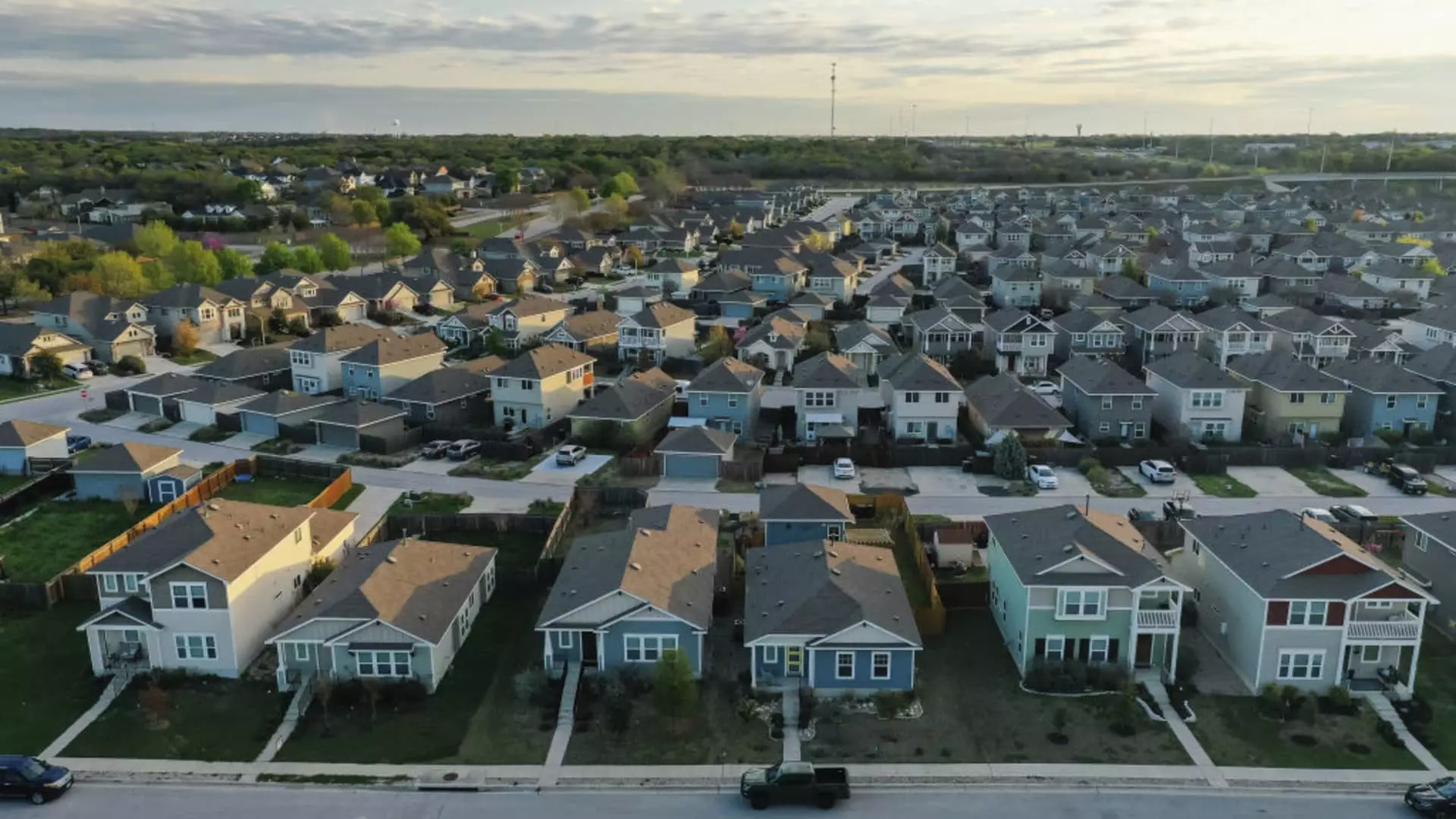As the spring housing market approaches, prospective homebuyers find themselves in a state of hesitation. Despite the uptick in property listings, many are reluctant to make substantial commitments. A primary reason for this inertia can be attributed to stagnating mortgage rates and the persistent rise in home prices, which casts a shadow over potential buyers’ confidence. According to the Mortgage Bankers Association, mortgage applications for home purchases have seen a 4% decline from the prior week, with demand mirroring the same period last year. This precarious balance between supply and demand raises questions about the future of the housing market as we move deeper into the year.
Recent trends in mortgage loans indicate a complex landscape for homebuyers. The average loan size for purchase mortgages has surged to $447,300, coinciding with limited government purchase activity — a striking increase that highlights an ongoing shift in the affordability of homes. Although the average interest rate for 30-year fixed-rate mortgages dipped slightly to 6.97%, this decline is overshadowed by the overall increase in home loan amounts. The competing realities of higher loan sizes and a somewhat stagnant interest rate landscape form a tricky conundrum for potential buyers, potentially discouraging entry into the market.
Interestingly, even as purchasing applications decline, there’s a rise in refinancing activities. Last week’s data revealed a substantial 12% spike in mortgage applications for refinancing, buoyed by the slight decrease in mortgage rates. This uptick from a year prior illustrates that while new buyers hesitate, homeowners are seizing the opportunity to lower their existing mortgage costs. However, the context reveals an alarming trend; many homeowners currently bask in lower rates than what’s available now, limiting the potential for further refinancing growth.
A stark reality of the current housing market is the dismal record of home sales, now hovering near a 30-year low. Despite the increased availability of homes, the wave of rising prices keeps many potential buyers on the sidelines. Real estate indicators suggest that house price appreciation remains unfazed, with some sellers still managing to hold their listing prices despite a noticeable rise in price reductions—15.6% this January versus 14.7% the previous year. This dichotomy creates a compelling narrative where while some sellers struggle to adapt, a significant number are comfortably navigating through buyer resistance.
Despite a 25% year-over-year increase in available homes for sale, the current supply remains below pre-pandemic levels. Homes are lingering on the market longer, with properties in January taking an average of 54 days to sell—the slowest recorded since March 2020. Such mounting time on the market suggests buyers are navigating through an evolving landscape that is certainly more competitive, yet stifled by persistent affordability challenges. The increasing inventory reflects potential sellers willing to adjust expectations; however, many are still poised to maintain their prices amid ongoing competition.
The housing market shows signs of significant complexity as we step into the prime selling season. Amidst lower mortgage rates and a longer selling timeframe, homebuyers are grappling with high prices and overall improved yet uncertain market conditions, posing critical questions for both buyers and sellers as they position themselves for potential opportunity.

